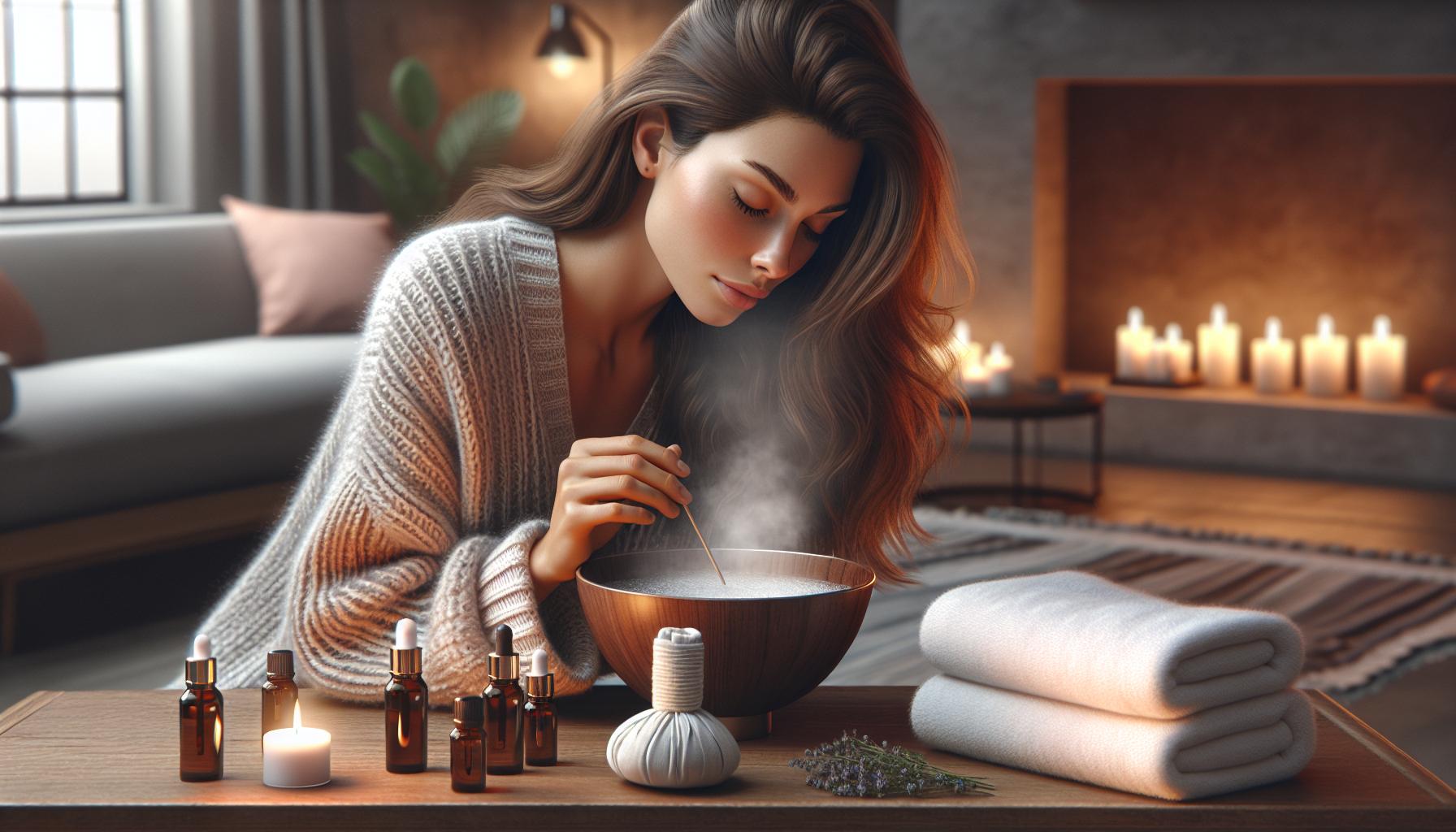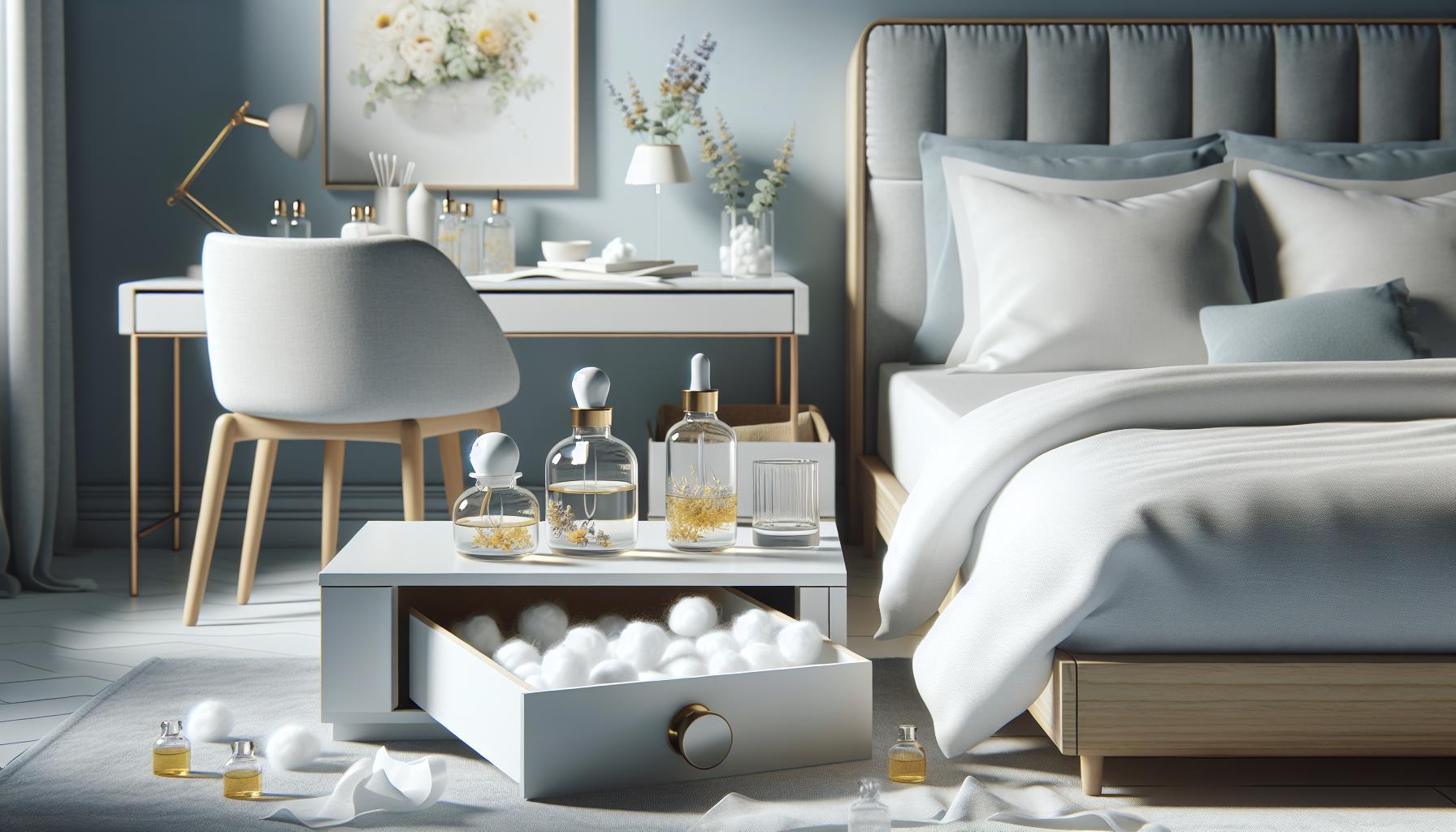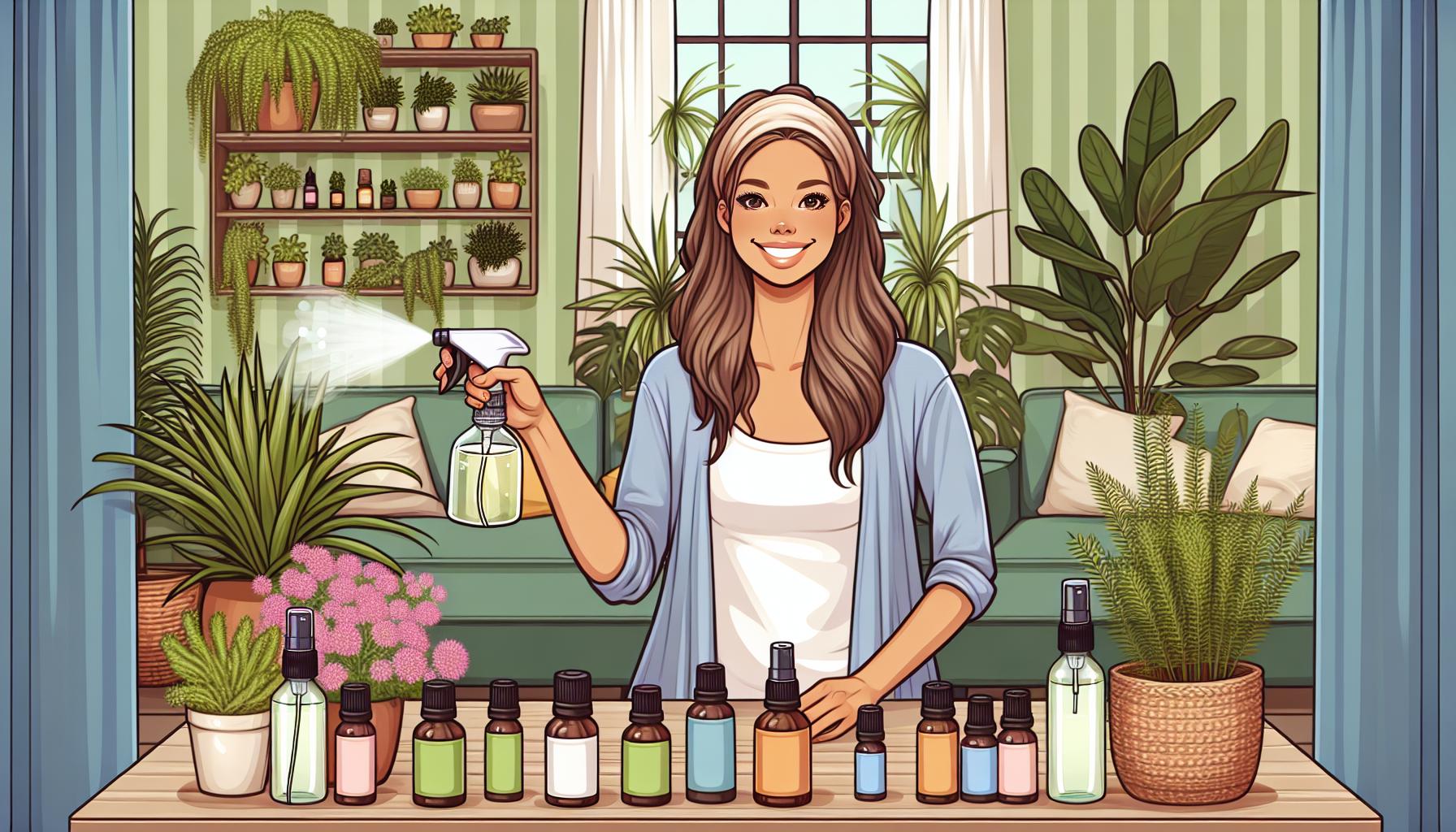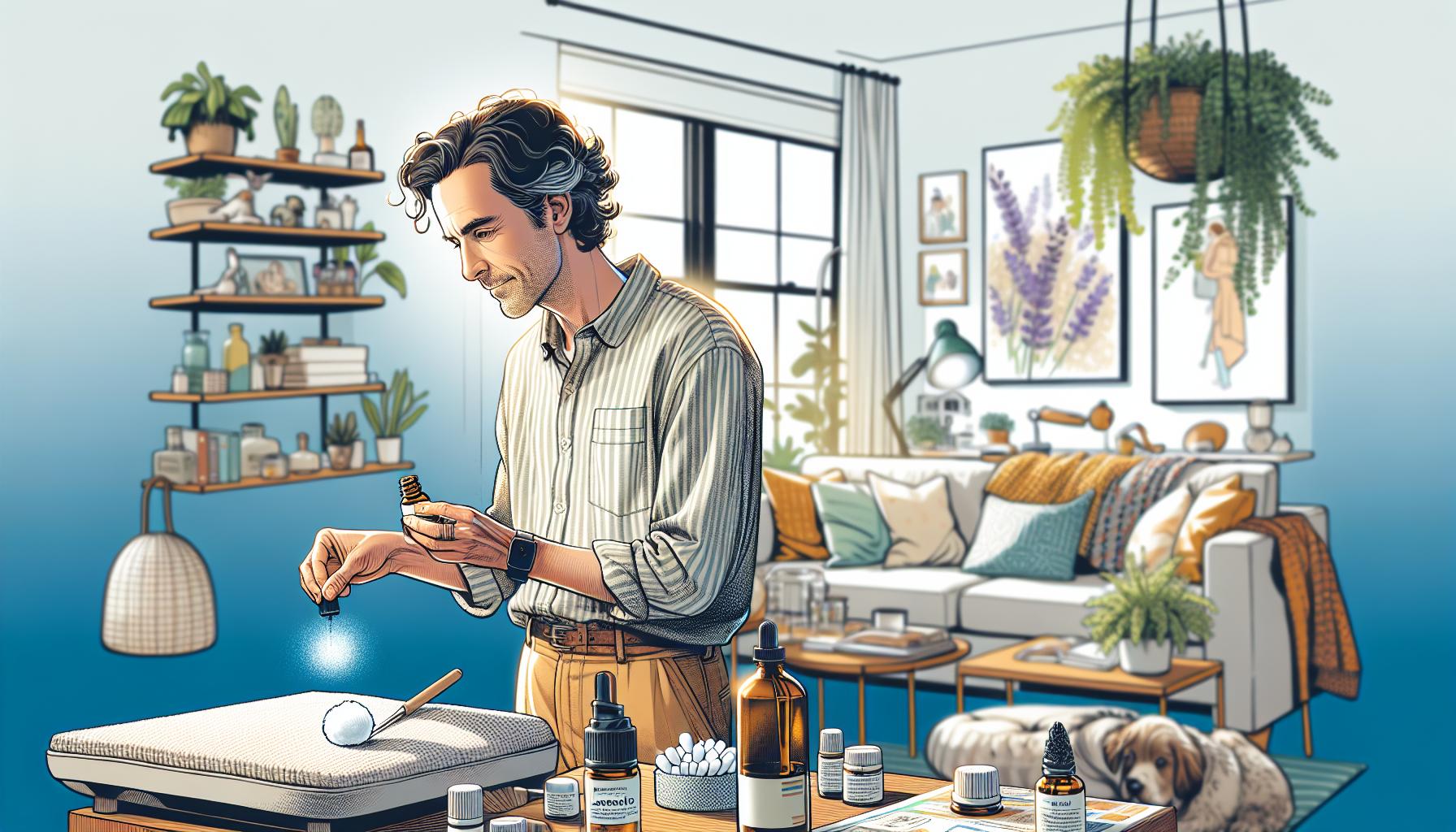Essential oils are a fantastic way to bring relaxation and rejuvenation into my daily routine, but what if I don’t have a diffuser? Luckily, there are plenty of creative and effective ways to enjoy their benefits without one. From simple DIY methods to everyday household items, I’ve discovered that diffusers aren’t the only way to make the most of these aromatic wonders.
Whether I’m looking to fill a room with calming lavender or enjoy the energizing scent of citrus on the go, essential oils can fit seamlessly into my life. Exploring these alternatives not only saves money but also adds a personal touch to how I incorporate them. Let me show you how easy it is to enjoy essential oils in ways you might not have considered.
Understanding Essential Oils
Essential oils are concentrated plant extracts known for their aromatic and therapeutic properties. Each oil carries unique compounds that determine its fragrance and potential benefits. For example, lavender oil is often associated with relaxation, while peppermint oil is linked to energy and focus.
The quality of essential oils matters to ensure their effectiveness. Pure essential oils are typically steam-distilled or cold-pressed from plants without additives or synthetic ingredients. Avoid artificial oils, as these lack the natural compounds needed for aromatherapy benefits.
Proper storage extends the shelf life of essential oils. Keep bottles in a cool, dark place, tightly sealed, to prevent oxidation. Using amber or cobalt blue glass bottles minimizes light exposure.
Essential oils should always be diluted before application. Carrier oils, such as coconut or jojoba oil, are commonly used for this purpose. Dilution prevents skin irritation, especially with potent oils like tea tree or cinnamon.
Methods To Use Essential Oils Without A Diffuser

Essential oils can be utilized effectively without a diffuser by exploring various simple and practical methods. These techniques incorporate accessible items and ensure you still enjoy their aromatic and therapeutic benefits.
Direct Inhalation
Directly inhaling essential oils is an efficient way to experience their aroma instantly. Placing 1-2 drops of the oil on a tissue or cotton ball works effectively. Holding the item near your nose and inhaling deeply for a few seconds intensifies the fragrance. This method is particularly effective for oils like eucalyptus or peppermint, which help clear nasal passages when inhaled.
Steam Inhalation
Steam inhalation combines warm steam with essential oils to disperse their aroma through the air. Add 2-3 drops of oil to a bowl of boiling water. Cover your head with a towel, lean over the bowl, and inhale deeply for about five minutes. This technique is ideal for congestion relief or skin cleansing, especially using oils like tea tree or rosemary.
Using A Bowl Of Hot Water
A bowl filled with hot water can help diffuse essential oils subtly into your space. Add 4-5 drops of the oil to the water and place the bowl in a room. The heat helps release the fragrance into the air. This method works well with oils like lavender or lemon for creating a calming or refreshing ambiance. Replenishing the hot water prolongs the effect.
Applying Essential Oils To Surfaces

Using essential oils on surfaces adds both fragrance and therapeutic benefits to your surroundings. This method is ideal for creating a personalized aromatic environment without a diffuser.
Pillows And Bedding
I suggest adding a few drops of essential oil to pillows or bedding to create a calming or refreshing effect. Lavender or chamomile works well for relaxation, while lemon or bergamot provides an uplifting scent. Always dilute with a carrier oil or mix drops into a spray bottle with water to prevent staining fabrics. Spritz sparingly on pillowcases or bed linens for a lasting aroma.
Cotton Balls And Tissues
Placing essential oils on cotton balls or tissues is a simple way to enjoy their benefits. Eucalyptus or peppermint on a cotton ball in a closet or drawer freshens the space and repels bugs. A tissue with oils like tea tree or lemon can be placed near a workspace to enhance focus and clarity. Replace the item once its scent fades, typically after several hours.
Creating DIY Products With Essential Oils

I use essential oils to create personalized DIY products that enhance both my living space and self-care routine. These products offer flexibility and a cost-effective way to incorporate essential oils without needing a diffuser.
Room Sprays
I combine essential oils with water to make room sprays that freshen and energize spaces. To create one, I mix 10–15 drops of essential oil, such as lemon or lavender, with 2 ounces of distilled water in a spray bottle. Adding a teaspoon of witch hazel or rubbing alcohol helps the oil blend with the water. I use this mixture to refresh linens, furniture, or even my car interior. For seasonal variations, I integrate oils like cinnamon or clove for warmth or peppermint for a cooling effect.
Body Oils And Lotions
Essential oils enrich body oils and lotions, creating aromatic and nourishing skincare products. I add 6–12 drops of essential oil, like tea tree for calming skin or rose for hydration, to 1 ounce of a carrier oil like jojoba or sweet almond. For lotions, I mix 3–5 drops of essential oil with fragrance-free lotion in the palm of my hand before application. I adjust blends for needs like relaxation, using lavender, or energizing with citrus oils.
Benefits Of Using Essential Oils Without A Diffuser

Using essential oils without a diffuser offers flexibility, cost efficiency, and accessibility. These methods adapt to different environments and situations, making aromatic and therapeutic benefits of essential oils available anytime.
- Enhanced Portability
Non-diffuser methods like applying oils to cotton balls, tissues, or personal items enable easy use on the go. Lavender or eucalyptus can provide relaxation or mental clarity during travel or work. - Cost Savings
Skipping a diffuser eliminates the upfront expense and maintenance costs. Techniques like steam inhalation or surface applications require minimal additional resources. - Versatile Applications
Essential oils can be seamlessly incorporated into DIY projects like room sprays or surface cleaners. Lemon oil adds a refreshing aroma to cleaning routines, while bergamot enhances uplifting DIY sprays. - Improved Customization
Applying essential oils directly or mixing them into products allows for precise control. Lavender supports relaxation when added to skincare, while peppermint creates a cooling sensation in body oils. - No Dependency On Equipment
Essential oils can still provide benefits without relying on a diffuser. Direct inhalation or sprinkling oils on linens makes relaxation or mood enhancement accessible even in equipment-free settings.
Conclusion
Exploring essential oils without a diffuser opens up endless possibilities for incorporating their benefits into daily life. From simple inhalation techniques to creative DIY projects, there are plenty of practical and cost-effective ways to enjoy their therapeutic properties. By experimenting with different methods and scents, you can create a personalized experience that suits your needs and lifestyle. Embracing these alternatives not only enhances your well-being but also makes essential oils more accessible and versatile for everyone.
Frequently Asked Questions
What are essential oils, and why are they popular?
Essential oils are concentrated plant extracts known for their unique aromatic and therapeutic properties. They are popular due to their ability to promote relaxation, boost mood, and improve overall well-being when used safely and effectively.
Can I use essential oils without a diffuser?
Yes, you can use essential oils without a diffuser. Methods like direct inhalation, steam inhalation, applying them to surfaces, or creating DIY sprays are effective ways to enjoy their benefits without additional equipment.
How do I inhale essential oils directly?
Place a few drops of essential oil on a tissue or cotton ball, hold it close to your nose, and inhale deeply. This is a quick and portable method to enjoy the aroma, particularly beneficial for oils like eucalyptus or peppermint.
How do I create a calming environment with essential oils?
Add a few drops of lavender or chamomile essential oil to your pillow or bedding. Alternatively, mix essential oils with water in a spray bottle and lightly mist your space to create a soothing ambiance.
Can I use essential oils on my skin?
Yes, you can apply essential oils to your skin, but always dilute them with a carrier oil (like coconut or jojoba oil) to prevent irritation. Test a small patch of skin before extensive use.
How do I make a DIY essential oil spray?
Mix a few drops of your favorite essential oil with water and a blending agent (e.g., a small amount of vodka or witch hazel) in a spray bottle. Shake well before use to freshen air or fabrics.
What are the benefits of using essential oils without a diffuser?
Using essential oils without a diffuser saves costs, enhances portability, and offers easy customization through DIY methods like sprays, steam, or application on fabrics. It’s a flexible and accessible way to enjoy their aromatic benefits.
How can essential oils enhance my self-care routine?
Integrate essential oils into body oils, lotions, or bath products. For relaxation, try lavender or chamomile; for energization, use citrus oils like orange or lemon. Always dilute before use.
Which essential oils are best for focus and mental clarity?
Peppermint, rosemary, and lemon essential oils are excellent for promoting focus and mental clarity. Use them by direct inhalation or adding to a cotton ball nearby while working or studying.
How should I store essential oils to ensure longevity?
Store essential oils in dark, airtight glass bottles, away from sunlight, heat, and moisture. Proper storage prevents oxidation and ensures their therapeutic properties remain intact.
Can essential oils stain fabrics?
Yes, essential oils can stain fabrics if not diluted properly. Mix with water or carrier oils before application, or test on a small, hidden fabric area first to avoid damage.
Are essential oils safe for everyone?
Essential oils should be used with caution. Some oils may not be safe for children, pregnant women, or pets. Always research or consult a professional before use, and follow dilution guidelines.
